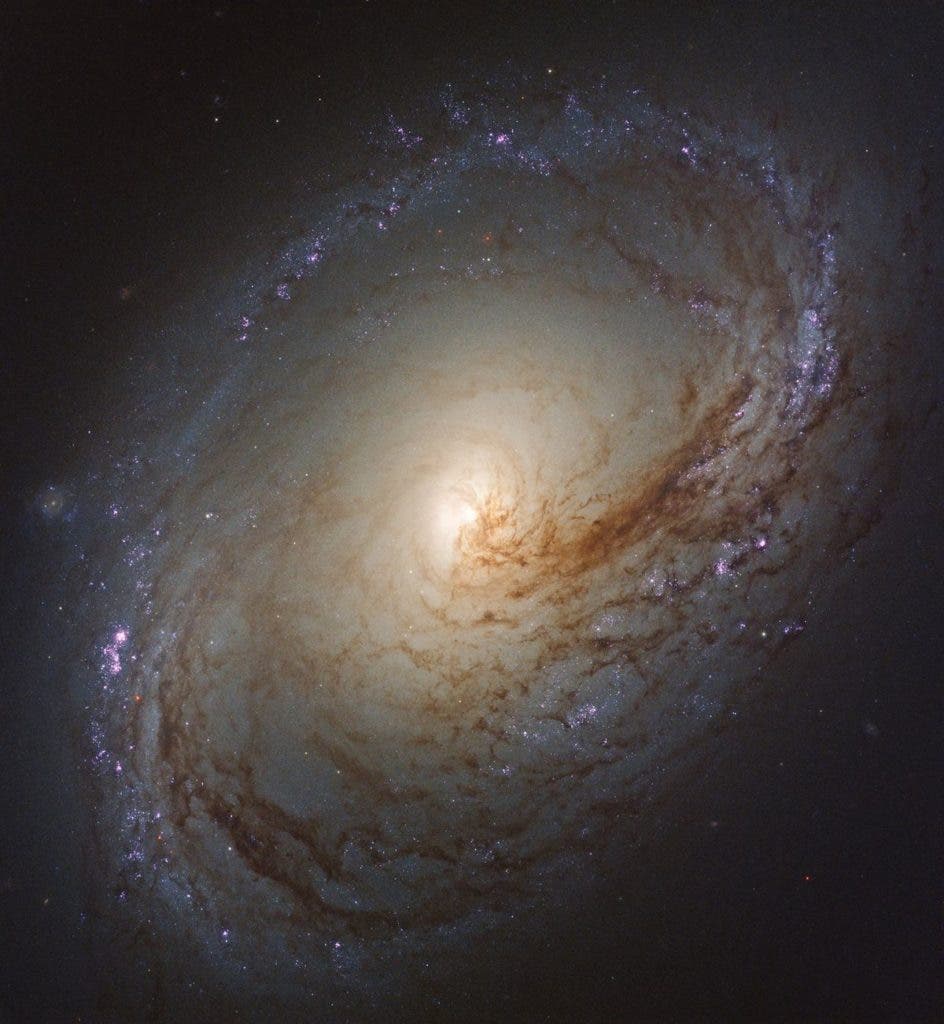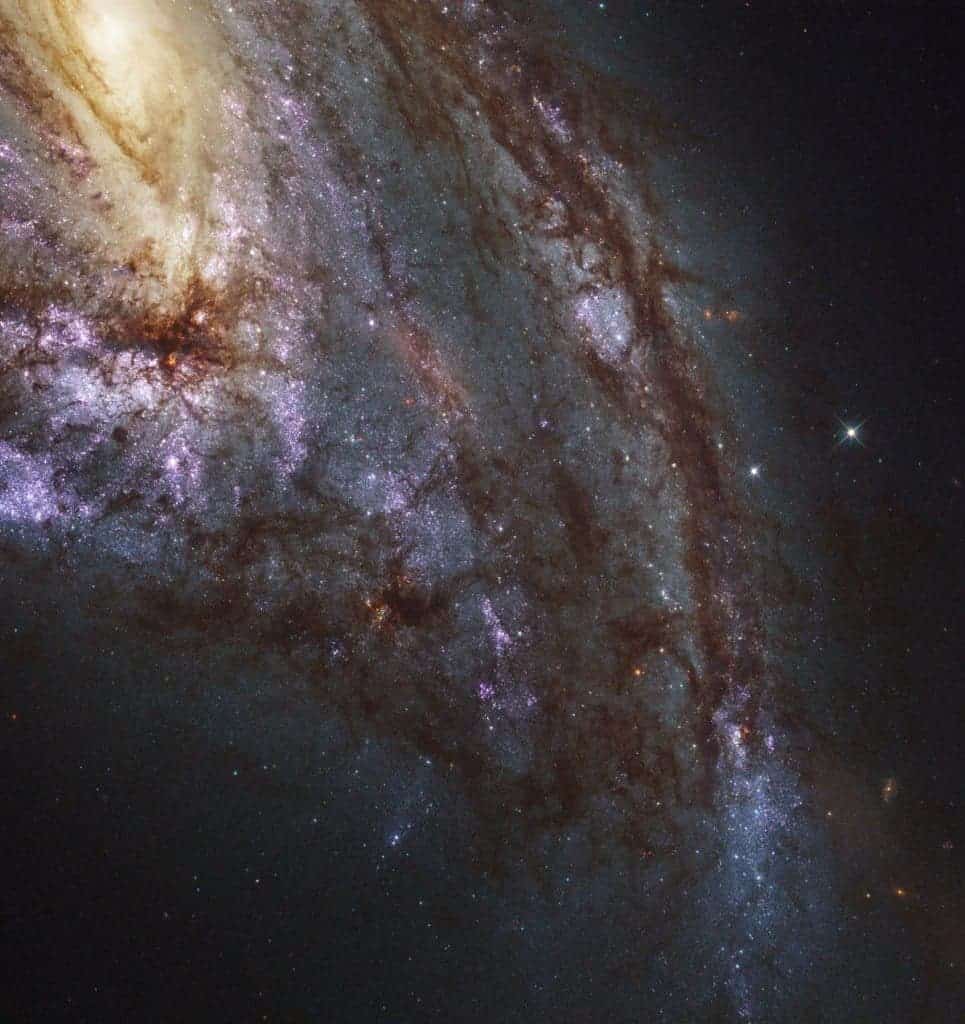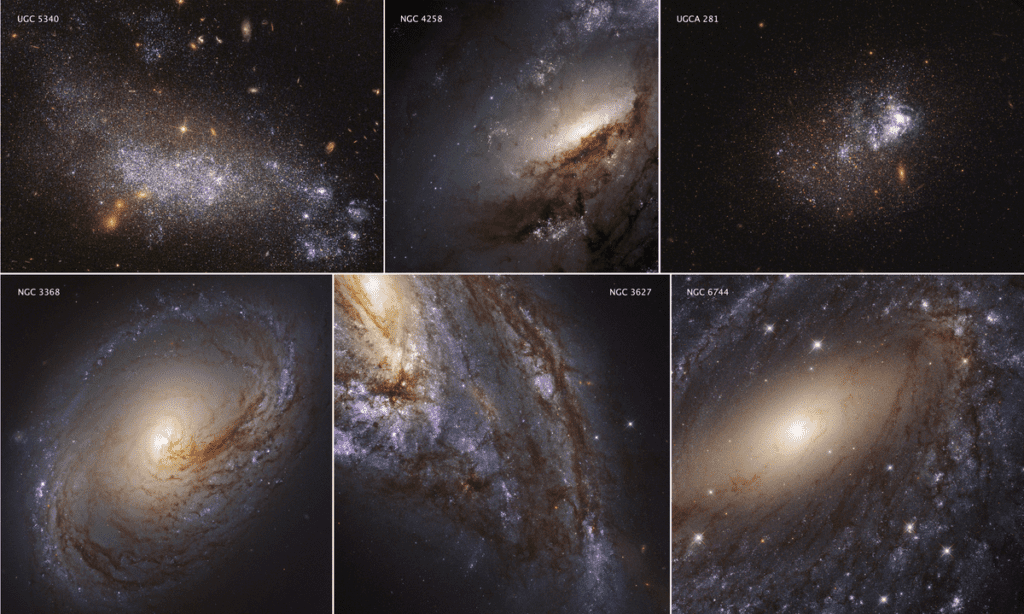Galaxies are amazing things, and we can now see some of them in unprecedented detail.

“There has never before been a star cluster and a stellar catalog that included observations in ultraviolet light,” explained survey leader Daniela Calzetti of the University of Massachusetts, Amherst. “Ultraviolet light is a major tracer of the youngest and hottest star populations, which astronomers need to derive the ages of stars and get a complete stellar history. The synergy of the two catalogs combined offers an unprecedented potential for understanding star formation.”
Light comes in different wavelengths. Ultraviolet light (UV) has a shorter wavelength than that of visible light, but longer than X-rays, and UV constitutes about 10% of the total light output of stars like the Sun. When you “look” at something in different wavelengths, you can infer different things about its physical properties. In this case, astronomers were trying to learn more about star formation, a process that still holds many secrets.
Astronomers combined new and old Hubble observations, looking for detailed information on young, massive stars and star clusters, as well as their evolution. It’s ironic, really — almost all we know about the universe, we know thanks to light from stars, and yet we don’t know how the stars themselves form.

As far as we know, stars form inside relatively dense concentrations of interstellar gas and dust known as molecular clouds. These areas are extremely cold (just ten degrees K above absolute zero), and at those temperatures, gases become molecular, meaning they’re much more likely to bind together. Oftentimes, gases clump up to higher and higher densities, and once a specific point is passed, stars can form. But here’s the thing: before the star is actually formed, the region is very dense and dark, virtually opaque to visible light (something called a dark nebula). Astronomers can still investigate them to an extent, but they use infrared and radio telescopes. So, instead, researchers try to find very young stars.
The research team carefully selected the LEGUS targets from among 500 galaxies, all of which lie between 11 million and 58 million light-years from Earth. Team members chose the galaxies based on their mass, star-formation rate, and abundances of metals –which, in this context, means elements that are heavier than hydrogen and helium.
Galaxies come in multiple shapes and sizes. We tend to think of galaxies as being spiral, Milky Way-like structures, but galaxies can be quite varied in terms of shape and size. Stars tend to be distributed quite regularly in galaxies, but while groups of stars tend to be more predictable, the same can’t be said about individual stars.
“When we look at a spiral galaxy, we usually don’t just see a random distribution of stars,” Calzetti said. “It’s a very orderly structure, whether it’s spiral arms or rings, and that’s particularly true with the youngest stellar populations. On the other hand, there are multiple competing theories to connect the individual stars in individual star clusters to these ordered structures.

This is where the new survey comes in, and why it’s so important. By imaging the galaxies in such detail, astronomers are able to zoom in on individual star populations, thus gaining more information about them. We can almost certainly expect a flurry of studies on star formation in the near future.
“By seeing galaxies in very fine detail — the star clusters — while also showing the connection to the larger structures, we are trying to identify the physical parameters underlying this ordering of stellar populations within galaxies. Getting the final link between gas and star formation is key for understanding galaxy evolution,” Calzetti concludes.
![{"shape": [8200, 8200, 3]}](https://cdn.zmescience.com/wp-content/uploads/2025/01/Euclid_s_view_of_spiral_galaxy_IC_342_pillars-350x250.jpg)





